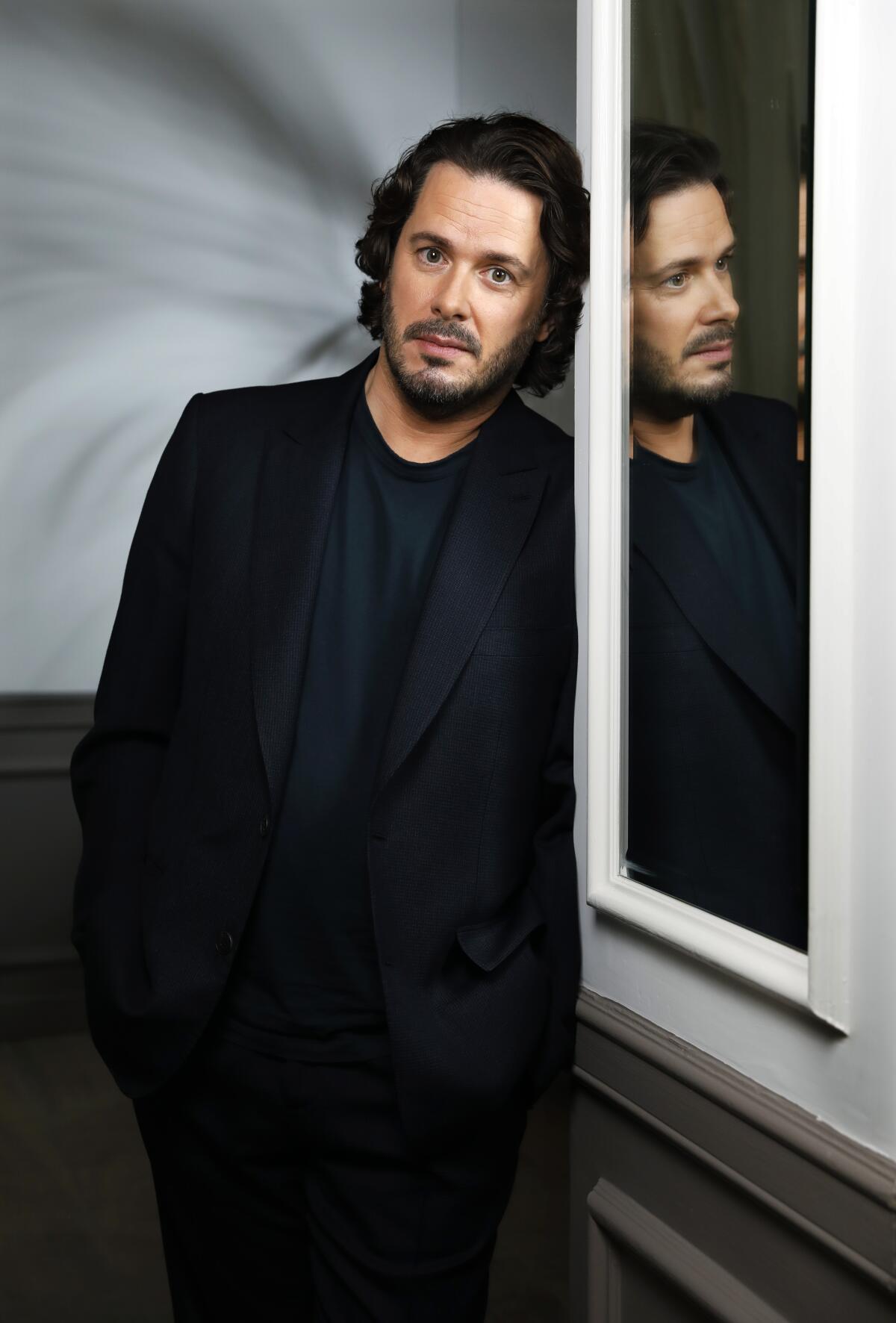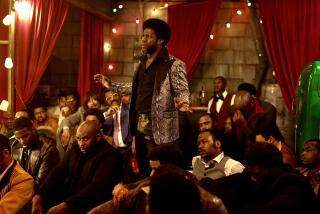Edgar Wright pulls together a decade of artistic obsession with âLast Night in Sohoâ

Since moving to London at 20, Edgar Wright has spent hours upon hours in the central neighborhood of Soho. Heâs written and edited his movies there, and the writer-director now lives only blocks away from the apartment where much of the action takes place in his recent psychological thriller âLast Night in Soho.â Over the years, Wright has thought a lot about the neighborhoodâs history.
âWhat were these buildings before?â the director asks, speaking shortly before the filmâs release in October. âItâs something that keeps me awake at night. I canât stop thinking about it. So in a way, the movie was born of many, many late night walks in Soho. Itâs certainly been percolating in my head for a long time.â
âLast Night in Soho,â about an aspiring fashion designer named Eloise (Thomasin McKenzie) who finds she can mysteriously enter the 1960s after moving into an old Soho flat, hits on two of Wrightâs self-proclaimed obsessions. First, although he was born in 1974, heâs long been captivated by the 1960s. Second, Wright is fixated on time travel and how our perceptions of nostalgia play into that desire.
âI was starting to question why I was thinking about that so much,â he says. âIs nostalgia itself a failure to deal with the present day? Are you in retreat? That was something that started to nag at me.â
Wright first conceived the story of âLast Night in Soho,â which centers on the relationship between Eloise and her 1960s counterpart, a wannabe singer named Sandie (Anya Taylor-Joy), over a decade ago. He hired a researcher, Lucy Pardee, to dig into Sohoâs past, interviewing people who worked there in the â60s. He began compiling a list of possible songs, pulling from a collection of vinyl records gifted to him by his parents.
âFor a long time, I had the story and I had the songs and I had this massive phone book of research,â Wright recalls. âWhen I was editing âBaby Driver,â I had lunch with Sam Mendes and he just mentioned apropos of nothing, âOh, have you ever met Krysty Wilson-Cairns? I think you guys would get on like a house on fire.â I met her in Soho and we had a drink on Dean Street, and during our first meeting she pointed at the strip club across the street and mentioned she used to live above it for five years. And she used to work in the Toucan, the Irish pub around the corner, which is in the movie. As soon as she said that I said, âI have this idea for a film.ââ
Wright and Wilson-Cairns co-wrote the screenplay for âLast Night in Soho,â keeping the structure of Wrightâs original idea but bringing in their personal experiences of moving to London as aspiring artists. Wright tapped into his memories of having imposter syndrome in his early 20s and thought a lot about why we tend to romanticize the past. The filmâs horrific dive into Sohoâs 1960s underworld, filled with misogynistic, controlling men, reflects the directorâs consideration of how women are treated by those in power.
âTo imagine that the â60s were the good old days is wrong, because everything thatâs bad now was bad then â possibly even worse,â he says. âWhatâs happened in the last four years is that victims have had a forum to speak. Back in the â60s, they absolutely didnât. To me, thereâs something very dark and disturbing about thinking about the stories in show business that have been buried. In a sense, weâre showing how little has changed and how far there is still to go.â
Aesthetically, Wright looked to the Technicolor films of the era and drew inspiration from a range of filmmakers, including Michael Powell, Basil Dearden and William Wyler. He looked at films like âPeeping Tomâ and âSapphire,â many of which embraced a vibrant color palette. The costumes, production design and hair and makeup evolve as the story cracks open, with each visual choice tracking the psychological unraveling of the characters. For Wright, who shot most of the film on location in Soho before the pandemic, notes that he wanted the color to be used âalmost as a weapon.â
âThe first 24 or so minutes of the movie, where youâre in modern London, the palette is muted, so that when you go into the â60s itâs like âPow!ââ he says. âI like the idea that rather than the past being in black and white, the past is in blazingly full color.â
In many ways, âLast Night in Sohoâ elevates Wright to the next level as a director. The experience, bringing together almost a decade of artistic obsession, was immediately challenging and occasionally surreal â exactly what heâs looking for.
âIf youâre not setting a high bar for yourself or there isnât something in the movie that scares you, youâre probably not doing your job properly,â the director says. âItâs almost that thing of aiming for something you donât quite know if you can pull off. I always try to stretch myself.â
He adds, âI would never be so dumb as to say I would never do a franchise movie, but I do feel incredibly fortunate that Iâve had the opportunity to make original movies. Iâm not entirely sure whatâs next, but to be able to make original films in a market where there are lots of continuing series of things means a lot to me.â
More to Read
From the Oscars to the Emmys.
Get the Envelope newsletter for exclusive awards season coverage, behind-the-scenes stories from the Envelope podcast and columnist Glenn Whippâs must-read analysis.
You may occasionally receive promotional content from the Los Angeles Times.










